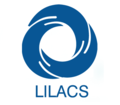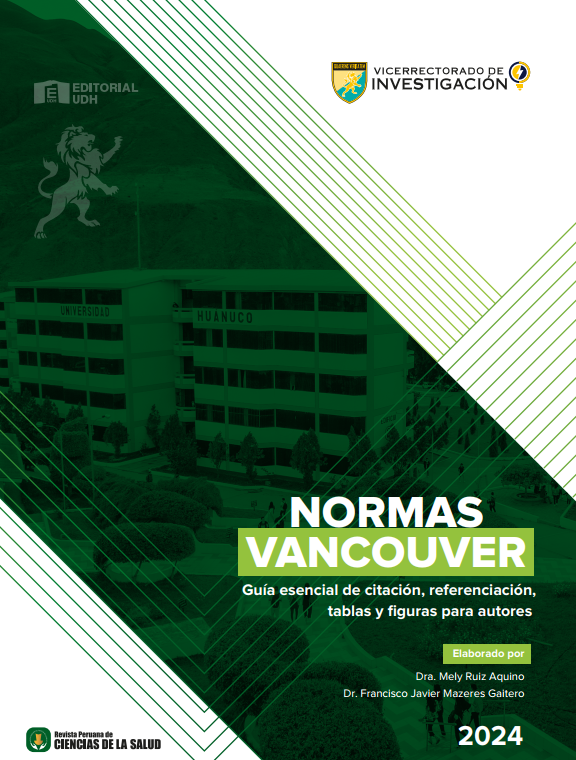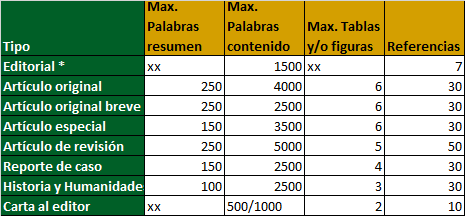Percepción de la entomofagia como alternativa alimenticia saludable en Panamá
DOI:
https://doi.org/10.37711/rpcs.2022.4.3.384Palabras clave:
alimentos alternativos, cultura, insectos, preparación, proteínaResumen
Objetivo. Conocer la percepción de la entomofagia como una alternativa alimenticia saludable en Panamá. Métodos. Se realizó un muestreo no probabilístico, dirigido a 100 personas con edades entre 18 y 65 años, nivel de instrucción de secundaria completa en adelante, proporción 1:1 hombres y mujeres, residentes de áreas urbanas y periurbanas, siendo el 44 % servidores públicos. Se les compartió un formulario electrónico con las siguientes preguntas: ¿qué insectos conoce que son comestibles?, ¿qué benefcios conoce del consumo de insectos?, ¿ha comido insectos alguna vez?, ¿incluiría insectos en su dieta?, ¿por qué sí o no los incluiría? Los datos fueron analizados con los programas Microsoft Excel y PSPP. Resultados. El 58 % de los encuestados conocían que los grillos y saltamontes son comestibles; el 45 % reconoció como benefcios saludables de ingerir insectos las proteínas y otros nutrientes, pero un porcentaje similar desconoce dichos benefcios; el 20 % afrmó haber comido insectos alguna vez y el 25 % los incluiría en su dieta. La cultura, el asco y la falta de interés fueron los motivos principales por los cuales la mayoría desestimó el consumo de insectos, mientras que los que sí consumirían insectos lo harían para mejorar su salud, para probar cosas nuevas y si tienen buena preparación. El análisis de conglomerados de K medias conformó 11 grupos, destacando el grupo 9, como consumidor ideal. Conclusiones. Para mejorar la percepción de la entomofagia como alternativa alimenticia saludable en Panamá es necesario ilustrar mejor a las personas e innovar en el procesamiento de alimentos preparados con insectos.
Descargas
Referencias
Díaz A, Gebler L, Maia L, Medina L, Trelles S. Buenas prácticas agrícolas para una agricultura más resiliente: Lineamientos para orientar la tarea de productores y gobiernos. [Internet] [Consultado 2022 Nov 22]. Disponible en: http://repositorio.iica.int/handle/11324/3087
OIEA (Organismo Internacional de Energía Atómica), OIRSA (Organismo Internacional Regional de Sanidad Agropecuaria). Plan de acción en caso de detección de moscas de la fruta no-nativas reguladas del género Bactrocera spp. en América Latina y el Caribe [Internet]
[Consultado 2022 Nov 28]. Disponible en: https://www.iaea.org/sites/default/files/plan-de-accion-bactrocera-spp_agosto2018-fnal.pdf
OIRSA (Organismo Internacional Regional de Sanidad Agropecuaria). Plan de acción para el manejo de la langosta centroamericana [Internet] [Consultado 2022 Nov 28]. Disponible en: https://www.oirsa.org/contenido/2020/(17%20marzo2020)%20Plan%20de%20
accio%CC%81n%20y%20atencio%CC%81n%20de%20brotes%20corregido%202.pdf
Raghavendra KV, Bhopaathi T, Gowthami R, Keerthi MC, Suroshe SS, Ramesh KB, et al. Insects: biodiversity, threat status and conservation approaches. Current Science [Internet] 2022 [Consultado 2022 Nov 28]; 122(12): 1374-1384. Disponible en: https://www.currentscience.ac.in/Volumes/122/12/1374.pdf
FAO (Food and Agriculture Organization of the United Nations). Looking at edible insects from a food safety perspective. Challenges and opportunities for the sector. Rome, ITA; 2021 [Consultado 2022 Nov 29]. Doi: https://doi.org/10.4060/cb4094en
Naciones Unidas. Desafíos Globales: Envejecimiento [Internet]; 2019 [Consultado 2022 Dic 20]. Disponible en: https://www.un.org/es/global-issues/ageing
Díaz-Ferrer Y, Cruz-Ramírez M, Pérez-Pravia MC, Ortiz-Cárdenas T. El método criterio de expertos en las investigaciones educacionales: visión desde una muestra de tesis doctorales. Rev. Cubana Edu. Superior [Internet]. 2020 [Consultado 2022 Dic 20]; 39(1), Epub 01-Abr-2020.
Disponible en: https://xurl.es/k8oy6
Jongema Y. List of Edible Insect Species of the World [Internet]. Laboratory of Entomology, Wageningen University, The Netherlands; 2017 [Consultado 2022 Nov 29]. Disponible en: https://www.wur.nl/upload_mm/8/a/6/0fdfc700-3929-4a74-8b69-f02fd35a1696_Worldwide%20list%20of%20edible%20insects%202017.pdf
White R, Hall MB. Nutritional and greenhouse gas impacts of removing animals from US agriculture. PNAS 2017 [Internet] [Consultado 2022 Nov 29]; 114(48), E10301-E10308. Doi: https://doi.org/10.1073/pnas.1707322114
Organización de las Naciones Unidas para la Alimentación y la Agricultura (FAO). La contribución de los insectos a la seguridad alimentaria, los medios de vida y el medio ambiente [Internet]; 2022 [Consultado 2022 Nov 29]. Disponible en: https://www.fao.org/3/i3264s/i3264s00.pdf
Martínez C. La población mundial llegará a 8.000 millones el 15 de noviembre de 2022; 2022 [Internet] [Consultado 2022 Nov 29]. Disponible en: https://mexico.un.org/es/189764-la-poblacion-mundial-llegara-8000-millones-el-15-de-noviembre-de-2022
Avendaño C, Sánchez M, Valenzuela C. Insectos: son realmente una alternativa para la alimentación de animales y humanos. Revista Chilena de Nutrición [Internet]. 2020
[Consultado 2022 Nov 29]; 47(6), 1029-1037. Doi: http://dx.doi.org/10.4067/S0717-75182020000601029
Saldarriaga-Rivera L, López-Villegas V, Rivera-Toquica F. Asociación de Ulomoides dermestoides "cucarrón del maní" como causa de purpura palpable. Revista Cubana de Reumatología [Internet]. 2017 [Consultado 2022 Nov 30]; 19(Suppl. 1), 224-227. Disponible en: http://scielo.sld.cu/pdf/rcur/v19s1/rcur10s17.pdf
Gravel A, Doyen A. The use of edible insect proteins in food: Challenges and issues related to their functional properties. Innovative Food Science & Emerging Technologies [Internet]. 2020 [Consultado 2022 Nov 30]; 59(102272). Doi: https://doi.org/10.1016/j.ifset.2019.102272
Cruzado V. Demolitor, la barra energética peruana hecha de insectos premiada en el mundo. El Comercio, Somos; 2019 [Internet] [Consultado 2022 Nov 30]. Disponible en: https://elcomercio.pe/somos/historias/demolitor-la-barra-energetica-peruana-hecha-de-insectos-premiada-en-el-mundo-salud-noticia/?ref=ecr
Van Huis A, Van Itterbeeck J, Klunder H, Mertens E, Halloran A, Muir G, Vantomme P. Edible insects: Future prospects for food and feed security. FAO – Rome, IT; 2013 [Internet] [Consultado 2022 Nov 30]. Disponible en: https://www.fao.org/3/i3253e/i3253e.pdf
Baltar F, Gorjup MT. Muestreo mixto online: Una aplicación en poblaciones ocultas. Intangible Capita [Internet]. 2012 [Consultado 2022 Nov 30]; 8(1), 123-149. Doi:
http://dx.doi.org/10.3926/ic.294
Alloatti M. Una discusión sobre la técnica de bola de nieve a partir de la experiencia de investigación en migraciones internacionales. IV Encuentro Latinoamericano de Metodología de las Ciencias Sociales, 27 al 29 de agosto de 2014, Heredia, Costa Rica. En Memoria
Académica [Internet]. 2014 [Consultado 2022 Nov 30]. Disponible en: http://www.memoria.fahce.unlp.edu.ar/trab_eventos/ev.8286/ev.8286.pdf
Atencio R, Goebel F-R, Guerra A, Nikpay A, Collantes R. Integrated pest management of the sugarcane stemborers Diatraea spp., Elasmopalpus lignosellus and Telchin licus. Revista Semilla del Este [Internet]. 2021 [Consultado 2022 Nov 30]; 2(1), 37-58. Disponible en: https://onx.la/eea64
Collantes R, Lezcano J, Reina L, Morales M. Detección temprana de Hypothenemus hampei (Ferrari, 1867) (Coleoptera: Curculionidae: Scolytinae) en cultivos de café robusta. Ciencia Agropecuaria [Internet]. 2022 [Consultado 2022 Nov 30]; (35), 1-12. Disponible en: http://
www.revistacienciaagropecuaria.ac.pa/index.php/ciencia-agropecuaria/article/view/590
Collantes R, Pittí J, Santos-Murgas A, Caballero M, Jerkovic M. Oligonychus ununguis (Acari: Tetranychidae): plaga del ciprés (Cupressus lusitanica Mill.) en Tierras Altas, Chiriquí, Panamá. Revista Investigaciones Agropecuarias [Internet]. 2022 [Consultado 2022 Nov 30]; 4(2),
-30. Disponible en: https://revistas.up.ac.pa/index.php/investigaciones_agropecuarias/article/view/2924
Collantes R, Pittí J, Santos A, Jerkovic M. El género Argiope (Araneae: Araneidae) en la Provincia de Chiriquí, Panamá. Aporte Santiaguino [Internet]. 2021 [Consultado 2022 Nov 30]; 14(2), 190-200. Doi: http://dx.doi.org/10.32911/as.2021.v14.n2.799
González G, Vetrovec J. New species and records of Neotropical ladybirds (Coleoptera: Coccinellidae). Revista Chilena de Entomología [Internet]. 2021 [Consultado 2022 Nov 30]; 47(2), 331-374. Doi: http://dx.doi.org/10.35249/rche.47.2.21.19
Rodríguez-Hernández BX, Osorio-Burgos O, Moreno-Serrano D, Barba-Alvarado AA. Presencia de Orius insidiosus Say (Heteroptera: Anthocoridae) en la Región de Azuero, Panamá. Revista Investigaciones Agropecuarias [Internet]. 2022 [Consultado 2022 Nov 30];4(2),8-20. Disponible en: https://revistas.up.ac.pa/index.php/investigaciones_agropecuarias/article/view/2923
Collantes R. Primer registro para Panamá de Brachycyrtus cosmetus (Walkley, 1956) (Hymenoptera, Ichneu monidae, Brachycyrtinae). Tecnociencia [Internet]. 2011 [Consultado 2022 Nov 30]; 13(1),37-41. Disponible en:
https://revistas.up.ac.pa/index.php/tecnociencia/article/view/916
Alvarado-Gálvez L, Medianero E. Especies de parasitoides asociados a moscas de la fruta del género Anastrepha (Diptera: Tephritidae) en Panamá, República de Panamá. Scientia [Internet]. 2015 [Consultado 2022 Nov 30]; 25(2), 47-62. Disponible en: https://goo.su/1KZJtH
Santos-Murgas A, Collantes R. Neorileya albipes (Hymenoptera: Eurytomidae): parasitoide de huevos de Arilus gallus (Hemiptera: Reduviidae) en Fortuna, Chiriquí, Panamá. Tecnociencia [Internet]. 2022 [Consultado 2022 Nov 30]; 24(1), 87-99. Disponible en: https://revistas.up.ac.pa/index.php/tecnociencia/article/view/2574
Collantes R, Jerkovic M. Organismos plaga y benéfcos asociados a cítricos de traspatio en Tierras Altas, Chiriquí, Panamá. Aporte Santiaguino [Internet]. 2020 [Consultado 2022 Nov 30]; 13(1), 48-58. Doi: https://doi.org/10.32911/as.2020.v13.n1.680
Collantes R, González-Ochoa F. Artrópodos benéfcos asociados al agroecosistema cocotero (Cocos nucifera L.) en Costa Abajo, Colón. Ciencia Agropecuaria [Internet]. 2021 [Consultado 2022 Nov 30]; (32),1-11. Disponible en: http://www.revistacienciaagropecuaria.ac.pa/
index.php/ciencia-agropecuaria/article/view/416
Collantes R, Santos A, Pittí J, Atencio R, Barba A, Cardona J. Larvas urticantes (Lepidoptera) asociadas con cultivos hortícolas en Cerro Punta, Chiriquí, Panamá. Manglar [Internet]. 2022 [Consultado 2022 Nov 30]; 19(2), 161-166. Doi: http://dx.doi.org/10.17268/manglar.2022.020
Collantes R, Muñoz J, Santos-Murgas A. Larvas urticantes (Lepidoptera) en cultivos de traspatio en Volcán, Chiriquí, Panamá. Aporte Santiaguino [Internet]. 2022 [Consultado 2022 Nov 30]; 15(2), 192-202. Doi: http://dx.doi.org/10.32911/as.2022.v15.n2.950

Publicado
Número
Sección
Licencia
Derechos de autor 2022 Rubén D Collantes G, Maricsa Jerkovic, Randy Atencio V, Paola Hernández A, Milagros Vaña H

Esta obra está bajo una licencia internacional Creative Commons Atribución 4.0.





















